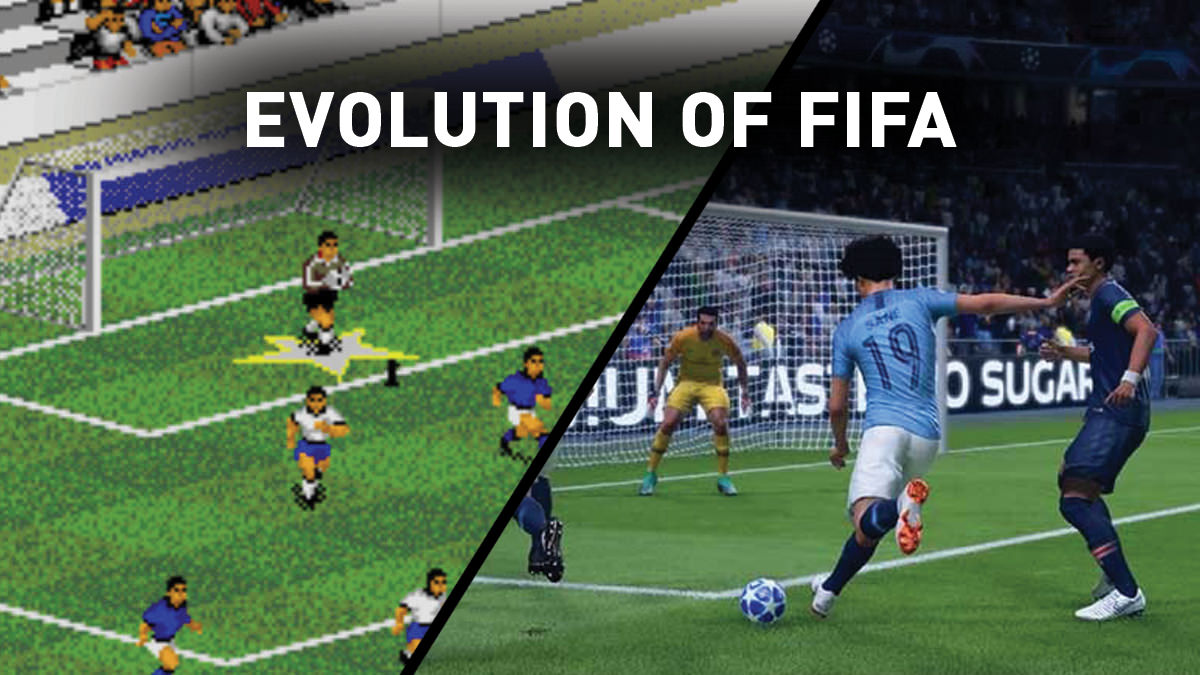
Starting all the way back in 1993, the FIFA series is now the most popular digital version of the biggest sport in the world. Today, players have access to incredibly realistic graphics, accurate physical simulations, and online connectivity on an entirely unprecedented level. A big part of this is the fact that it now finds itself as an incredibly popular game online and in the eSports sphere.
Constantly climbing the ranks in global eSports tournaments, in terms of interest and winnings, FIFA is a game still on the rise. With that in the mind, we want to take a look at the biggest steps in evolution. Where did FIFA start, and at which point did these changes start to make it viable as a competitive sport?
We go back to the beginning, to see where these changes took us.
The very first entry in this series was called FIFA International Soccer, which was released in 1993 with the Sega Genesis as its most modern console platform. With isometric graphics, rather than a top-down view, this game was unique, but not entirely easy to control and aim shots with. At the very least, it proved popular enough for sequels in every subsequent year.
3D graphics first made their appearance in FIFA Soccer 96. This was made possible through the awesome new power of the Sega Saturn and Sony PlayStation consoles. This was also the first game in the series to present most of the players with their real names, as the game series gained the official rights.
FIFA 97 brought with it the inclusion of an indoor soccer game with six players aside. Even more advanced was the fact that much of the animation was motion captured, relying on data collected from famous French player David Ginola. 97 also brought with it commentary from Andy Gray and John Motson. While limited by today’s standards, this was still a very progressive feature.
FIFA 2001 marked an enormous forward step in technology as the game series moved onto PlayStation 2 and it’s much-touted “emotion engine”. This was the first time in the series that many players had unique faces, a feat only possible through the increased hardware power of the next-gen PS2.
2003 brought with it another update to the graphics engine in the game. At this point FIFA has again reached into the other consoles, becoming available for Xbox and GameCube, along with the standard PS2 and computer releases. This was where the viability of major competition first appeared. While online from the PS2 was available, it was the success of Xbox live which really took FIFA online matches to a new level.
FIFA 07 brought the series into the seventh generation of video game consoles, at it launched on the XBOX 360 alongside the older generation of devices. Despite the graphics updates on the 360, the gameplay remained the same over all major console and PC releases. This was also important because it is around this time that Sony and Nintendo finally started competing with Microsoft when it came to online infrastructure.
As it just so happens, this coincided with the rise of eSports in the west from a curiosity to a major force. Now with enormous coverage, both in terms of general eSports news and dedicated viewing options, watching these games became possible on an entirely new level. Aided by Twitch and even traditional channels like ESPN, this industry had finally entered mainstream viability almost worldwide. FIFA is a big part of this with tournaments such as the eWorld Cup that have big prize pools and attract large audiences in person and online. However, tournaments such as The Overwatch League and the League of Legends Championship Series have certainly used competitions in FIFA’s real-life counterpart as inspiration for their league format.
By the time FIFA 13 finally rolled around, FIFA had entered its modern stage of immense features and online connectivity. With 30 leagues and 46 national teams, the roster of the game had exploded, as had the level of fidelity. While the original FIFA International Soccer sold 500,000 in the first four weeks, FIFA 13 sold over 1.02 million in 48 hours. With over 150 million total FIFA games sold, this series remains one of the biggest ever in gaming.
With the next generation of devices just around the corner, we can’t wait to see what’s about to come, and just how much more FIFA could still grow.
Comments